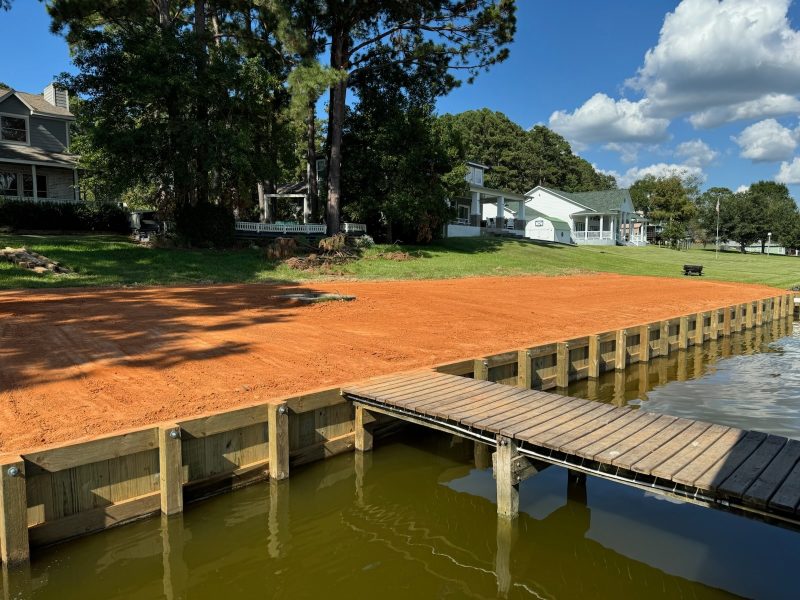If you own waterfront property, you’ve probably wondered about the best way to protect your shoreline from erosion. Two popular options frequently come up in conversations with neighbours and contractors: bulkheads and seawalls. While they may seem similar at first glance, these structures serve distinct purposes and are more effective in different situations.
What Are Bulkheads?
Bulkheads are vertical walls used to retain soil from washing away. Think of them as the retaining walls of properties that are on the shore.
A bulkhead’s primary function is to prevent erosion. They create a clear boundary between your property and the water. This makes them perfect for areas where you want to maintain a specific shoreline shape or protect valuable land from disappearing.
Understanding Seawalls
Seawalls are bigger, stronger structures built to handle rough water conditions. They’re typically thicker and taller than bulkheads. You’ll often see them in areas that face large waves, storms, or heavy boat traffic.
These walls are designed to absorb and deflect the energy from waves. They protect not just your shoreline, but also buildings, roads, and other structures behind them. Seawalls are common in coastal areas where hurricane damage is a real concern.
Key Differences Between the Two
The biggest difference lies in their purpose. Bulkheads focus on preventing erosion and holding back soil. Seawalls are constructed to guard against storm damage and wave activity.
Cost is another major factor. Bulkheads are generally less expensive to install and maintain. Seawalls require more materials and engineering, making them a bigger investment upfront.
Size matters too. Bulkheads are usually shorter and thinner. Seawalls are built to be massive and sturdy enough to handle powerful forces from storms and large waves.

When to Choose Bulkheads
The ideal conditions for bulkheads are still bodies of water, such as lakes, rivers, and sheltered bays. If your main concern is stopping soil erosion and you don’t deal with large waves, a bulkhead is probably your best bet.
They’re also great for properties where you want to maximize usable land. Since bulkheads are built right at the water’s edge, they don’t take up much space on your property.
Professional marine bulkheading construction can help you determine the right materials and design for your specific location. The installation process is usually quicker and less disruptive than seawall construction.
When Seawalls Make Sense
Choose seawalls if you face rough water conditions regularly. Properties on ocean coasts, large lakes with fetch, or areas with heavy boat traffic benefit from the extra protection seawalls provide.
If your area experiences frequent storms or you’re in a hurricane zone, seawalls offer better protection for your home and other structures. They’re built to handle extreme conditions that would damage lighter bulkheads.
Making Your Decision
Consider your specific situation carefully. Think about the water conditions you face, your budget, and what you’re trying to protect. Calm waters and erosion control point toward bulkheads. Rough conditions and storm protection suggest seawalls.
Getting professional advice is always smart. Experienced contractors specializing in marine bulkheading construction can evaluate your shoreline and recommend the best solution. They’ll consider factors like soil conditions, water depth, and local regulations.
The right choice depends on your unique circumstances. Both options can effectively protect your waterfront investment when properly designed and installed.
